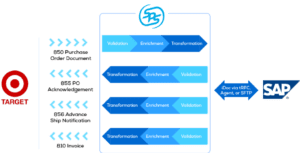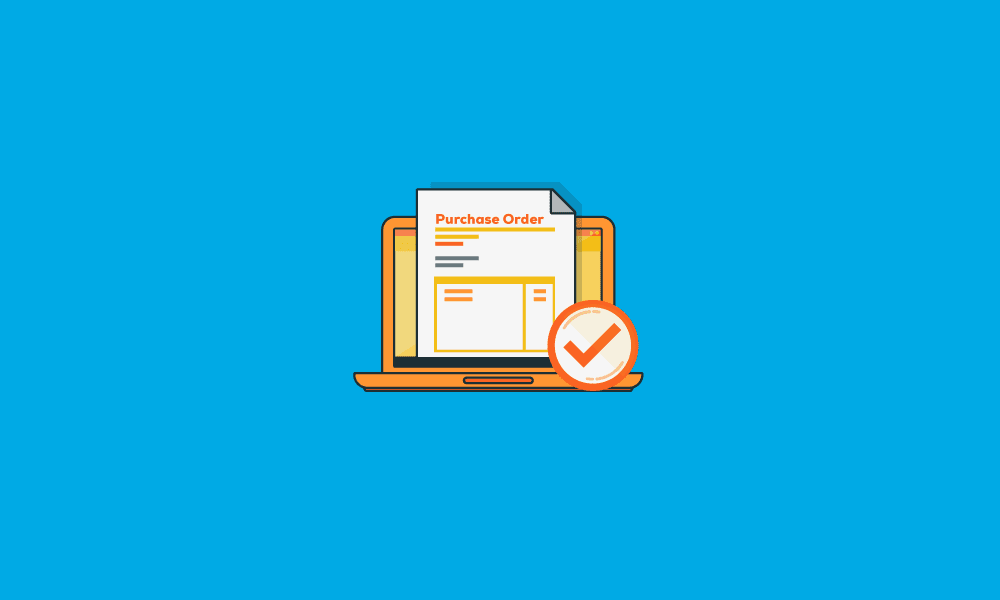Order-To-Invoice EDI for SAP: A New Standard
A common refrain at SPS Commerce is that EDI, as a standard, is anything but standard. After all, how could it be when every retailer in the world has different business rules, requirements, and expectations of their suppliers?
EDI becomes even more non-standard when suppliers think about integrating and automating transactions into an ERP like SAP. Perhaps, for example in EDI for SAP, you need to validate item numbers and automatically append a PO number on inbound transactions. Perhaps you need to validate location IDs and that tracking numbers are present in outbound transactions.
Processes vary from organization to organization, which is why EDI for SAP is an end-to-end standard only to the extent that you make it yours. It’s also why SPS brought to market the tools and services needed to adapt to your specific processes: a feature set of our signature product Fulfillment that we call System Automation.
The following illustrates how SPS Commerce standardizes the order-to-invoice process for SAP with System Automation features. We’ll start with the EDI 850 SAP document and assume that Target, for example, has sent a purchase order for your newest widget.

From left to right, the process flows as follows:
- Target delivers an EDI 850 document to the SPS Commerce Universal Network, which is then routed to the mailbox associated with your Vendor ID.
- SPS validates that the necessary data is present.
- SPS also validates, enriches, and transforms the data based on your SAP processes using configurable business rules.
- Errors are relayed back to the retailer and your organization where appropriate.
- Human workflow tools are set up to allow for errors to be corrected via a simple dashboard to keep transactions moving along (if desired).
- After all, the information is validated and enriched to your standard, SPS transforms the data to your specifications and generates an iDoc file.
- The iDoc file is delivered to you via tFRC, a remote agent that we install on-premise, or SFTP if preferred.
Other Common EDI Transactions for SAP: EDI 855, EDI 856, EDI 810
Now let’s expand this out to a larger Order-to-Invoice process to include the 855 PO Acknowledgement, 856 Advance Ship Notification and the 810 Invoice.

As shown above, a business may send an EDI 850 SAP and in return will receive an EDI 810 SAP document or any other responsive documents in the following process:
- You send an iDoc (such as EDI 855, 856 or 810) with the transaction data via tRFC, the on-premise agent, or SFTP.
- SPS validates, transforms, and enriches outbound documents based on your specifications using configurable business rules. Instead of errors getting to the retailer, they are stopped in their tracks and queued.
- Business users correct errors using human workflow tools (if desired), allowing non-technical staff to shepherd along transactions without involvement from IT.
- SPS transforms and converts the data to Target’s specifications and delivers the document on your behalf.
- The SAP Status Feedback Loop can be leveraged to report on the status of outbound documents, including current location and 997 progress.
Now, this is automation for just one retailer. Real scalability happens when SPS applies the business rules implemented for Target to your other retail trading partners. As your business rules library becomes more robust, rules can be toggled on and off by partners, making retailer changes easy to implement and onboarding new partners a simple point-and-click exercise – all of which we do for you as a full-service EDI provider.
When done right, the benefits of Fulfillment with System Automation features are many: reduced errors, faster error resolution, faster trading partner onboarding, reduced chargebacks and fees, and the ability to allocate IT resources to more important work, to name a few.
Together with our full-service approach where SPS experts drive the design and configuration process, along with ongoing resource access, there simply is no other outsourced EDI provider that can make the order-to-invoice process feel like an actual standard – your standard.
For more information and a demo of how SPS can standardize your end-to-end processes with EDI for SAP, please contact SPS today
- Discover why lack of data is a top supplier challenge in 2024 - May 21, 2024
- How to get purchase order to invoice reconciliation right - March 1, 2023
- Five top EDI documents to integrate and automate - December 7, 2022

RELATED POSTS
What is a 2D barcode and how does it ...
Building brand trust: why transparenc...
Advancing food supply chain visibilit...